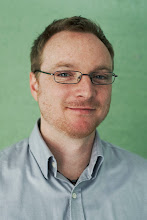Use a rhythm, either external (like your footsteps while walking) or internal (like your heartbeat) to keep time and breathe naturally for a little while - take only as much air as you need and try to breathe out a little more than you breathe in. Feel for the small pauses between the breath in and the breath out and try to make the whole process very smooth and un-hurried.
Then use the count to expand the pauses between breaths so that instead of feeling 'breathe in;breathe out', you breathe in for 1 count; hold the breath for one count; breathe out for one count and hold your breath for one count. Then repeat.
Again, take only the air that you need and try to make the whole process smooth and un-hurried. Breathe in slowly and for the whole count. Breathe out slowly and for the whole count. After the hold on the out breath, you will find it difficult, but breathe slowly and smile.
Your count could be five steps, or ten, or twelve; or it could be 3 heartbeats, 9 heartbeats - some people count in prayers or affirmations, some people use a count of twenty flat-out running steps.
You can make this as challenging or as easy as you want to - some counts will feel more comfortable than others, and sometimes you will feel that you can increase the count; sometimes not.
If you try some long counts (lots of steps or heartbeats per breath), you may find that you begin to feel anxious or panicky. If this happens, smile and slow down...
If the world starts turning black from the ground up - smile a LOT and consider reducing your count.
Don't be fanatical, try to act normal- and have fun with this. It should not be a chore - if it's not entertaining, or becomes difficult, revert to natural breathing for a while...
The most important part is to pay attention to how you feel inside.
Download The Slight Edge: Turning Simple Disciplines into Massive Success
and Happiness GET ANY BOOK FAST, FREE & EASY!📚 PDF
-
*Download AudioBook The Slight Edge: Turning Simple Disciplines into
Massive Success and Happiness Best Sellers PDF*
Read The Slight Edge: Turning Sim...
4 years ago


